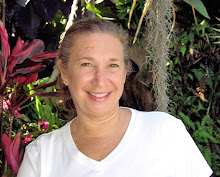

Whatever you call it where you are, here in Hawai‘i it is Malasadas Day and it is tasty. Mine, this year, was particularly delicious thanks to a (relatively early) morning call from friend/client Cathy Nobriga Kim. She’s Roselani Ice Cream’s third generation ice cream maker so she knows a thing or two about sweets! And her timing was perfect. I was a couple of minutes away from her office when she called to say, “Stop by for Fat Tuesday, the real kine.”
The Portuguese began immigrating to these Islands in 1878 – to work the plantations and also to teach the ali‘i (royalty) about ranching. Cathy’s family – the Nobrigas – are well known on Maui for their Kahakuloa ranch and the excellent beef cattle they have been raising since the 1920s. Her father, Uncle Buddy Nobriga, is mentor to the next generation of Maui cattle ranchers. But I digress…
Like all immigrants, the Portuguese brought their culinary traditions to Hawai‘i with them. The sweetest of these is the malasada, a delicious donut-like confection. During the plantation days in anticipation of the beginning of Lent, Portuguese women would fry up big batches of malasadas which their husbands would share with other workers in the fields. It didn’t take long for Chinese, Japanese, Korean, and Filipino immigrants and the local Hawaiians to embrace them as their own. Today, malasadas are ubiquitous throughout Hawai‘i and each Island has its “malasadas palace.” On Maui, it’s Home Maid Bakery which sells them hot – the only way to enjoy them, really – for a few hours in the morning and a few more in the evening.
But the ones I had this morning – two different kinds – were both truly amazing and truly HOMEMADE. The first, made from Uncle Buddy Nobriga’s grandma’s recipe, are egg malasadas (that’s them in the first photo). Light, airy and meant to be eaten with maple syrup. I had never even heard of egg malasadas before. The second , yeast malasadas made from Auntie Barbara Nobriga’s own recipe, are the kind more familiar to me but these were far beyond any others I’ve ever had (that’s them in the second photo). Dense, with a really yeast-y, almost malty taste sprinkled with not just sugar but a sugar-cinnamon mix that adds yet another layer of flavor. Unreal. Proving once again there is nothing as good – for the emotional self as well as the tummy – as a recipe handed down through a family. Auntie Barbara says you’re supposed to eat at least six to really get the full force of Malasada Day. Believe me, I could have EASILY eaten six. But I stopped at four.
The Portuguese began immigrating to these Islands in 1878 – to work the plantations and also to teach the ali‘i (royalty) about ranching. Cathy’s family – the Nobrigas – are well known on Maui for their Kahakuloa ranch and the excellent beef cattle they have been raising since the 1920s. Her father, Uncle Buddy Nobriga, is mentor to the next generation of Maui cattle ranchers. But I digress…
Like all immigrants, the Portuguese brought their culinary traditions to Hawai‘i with them. The sweetest of these is the malasada, a delicious donut-like confection. During the plantation days in anticipation of the beginning of Lent, Portuguese women would fry up big batches of malasadas which their husbands would share with other workers in the fields. It didn’t take long for Chinese, Japanese, Korean, and Filipino immigrants and the local Hawaiians to embrace them as their own. Today, malasadas are ubiquitous throughout Hawai‘i and each Island has its “malasadas palace.” On Maui, it’s Home Maid Bakery which sells them hot – the only way to enjoy them, really – for a few hours in the morning and a few more in the evening.
But the ones I had this morning – two different kinds – were both truly amazing and truly HOMEMADE. The first, made from Uncle Buddy Nobriga’s grandma’s recipe, are egg malasadas (that’s them in the first photo). Light, airy and meant to be eaten with maple syrup. I had never even heard of egg malasadas before. The second , yeast malasadas made from Auntie Barbara Nobriga’s own recipe, are the kind more familiar to me but these were far beyond any others I’ve ever had (that’s them in the second photo). Dense, with a really yeast-y, almost malty taste sprinkled with not just sugar but a sugar-cinnamon mix that adds yet another layer of flavor. Unreal. Proving once again there is nothing as good – for the emotional self as well as the tummy – as a recipe handed down through a family. Auntie Barbara says you’re supposed to eat at least six to really get the full force of Malasada Day. Believe me, I could have EASILY eaten six. But I stopped at four.
